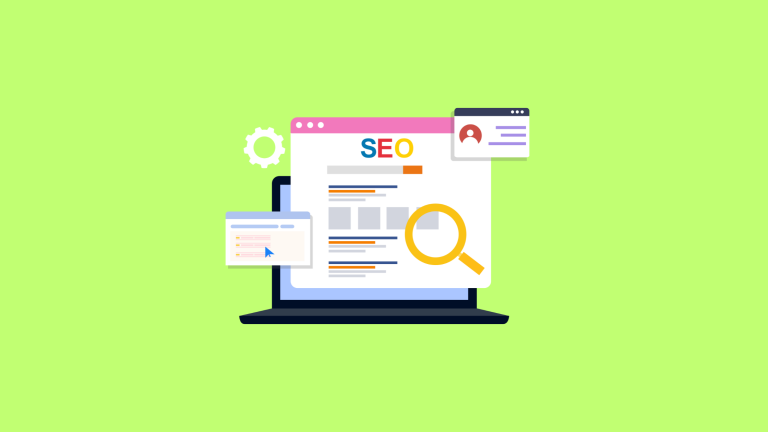How to Create a B2B SEO Strategy (And Implement It)
In the competitive digital landscape of 2025, simply having a website for your B2B business is akin to having a billboard in the desert. To attract high-value clients and drive sustainable growth, you need a strategic approach to get your brand in front of the right people at the right time.
This is where a robust B2B Search Engine Optimization (SEO) strategy becomes not just a marketing tactic, but a fundamental business imperative.
A common misconception is that B2B SEO is a more subdued, less dynamic version of its B2C counterpart. The reality is, while the core principles of SEO remain the same, the application and strategy for B2B are significantly more nuanced and strategic.
The sales cycles are longer, the decision-making units are larger, and the value of a single conversion can be astronomical.
This in-depth guide will walk you through the essential steps of creating and implementing a powerful B2B SEO strategy that will not only boost your search engine rankings but also generate qualified leads and establish your brand as an industry authority.
How B2B SEO Works?
At its core, B2B SEO is the process of optimizing your online presence to appear in the top results when potential business customers search for the products, services, or information you offer.
It’s a strategic conversation with search engines like Google, convincing them that your website holds the most valuable and relevant answers for their users.
Here’s a breakdown of the mechanics:
1. Crawling and Indexing
First, search engine bots (or “spiders”) crawl the internet to discover content. They follow links from one page to another, collecting information about what each page is about.
This information is then organized and stored in a massive database called an index. A technically sound website makes it easy for these bots to find and understand your content.
2. Understanding Intent and Relevance
When a user types a query (e.g., “enterprise cybersecurity solutions”), the search engine dives into its index to find the best matches. For B2B, this is critical.

The search engine analyzes your website’s content—the keywords you use, the topics you cover, the depth of your information—to gauge its relevance to the business-oriented query. It’s trying to understand the intent behind the search: Is the user just learning, comparing options, or ready to buy?
3. Evaluating Authority and Trust
This is where B2B SEO truly diverges from B2C. Search engines need to know they are recommending a credible, authoritative source, especially when the stakes involve high-value business decisions. They determine this authority through several signals:
- Backlinks: Links from other reputable, industry-relevant websites act as votes of confidence.
- Content Quality: In-depth, well-researched, and expert-driven content (like white papers, case studies, and detailed guides) signals expertise.
- Topical Authority: Consistently publishing high-quality content around a specific niche establishes your website as a go-to resource.
4. Ranking and Serving Results
Based on hundreds of ranking factors, the search engine’s algorithm ranks the indexed pages in order of relevance and authority. The goal is to provide the user with the most helpful and trustworthy results on the Search Engine Results Page (SERP).
In essence, B2B SEO works by strategically aligning your website’s technical structure, content, and authority signals with the specific, problem-solving queries of your ideal business customers. It’s about being the most helpful and credible solution that a search engine can find.
Implementing B2B Buyer’s Journey and Keyword Strategy
Before you can even think about title tags and backlinks, you need to get inside the minds of your potential customers. The B2B buyer’s journey is rarely a straight line. It’s a complex process involving multiple stakeholders, extensive research, and careful consideration.

1. The Three Stages of the B2B Buyer’s Journey:
- Awareness Stage: The buyer is experiencing a problem or has a need but may not have a name for it yet. They are looking for informational content to better understand their challenges.
- Consideration Stage: The buyer has now clearly defined their problem and is researching potential solutions. They are comparing different approaches and vendors.
- Decision Stage: The buyer has decided on a solution category and is now evaluating specific vendors to make a final purchase decision.
2. Crafting a Keyword Strategy that Aligns with the Journey:
Your keyword strategy is the foundation of your B2B SEO efforts. It’s about understanding the language your target audience uses at each stage of their journey.
- Awareness Stage Keywords: These are typically problem-based and informational. Think “how to improve manufacturing efficiency” or “signs of an outdated CRM.” A staggering 67% of the buyer’s journey is now done digitally, so capturing this early research phase is crucial.
- Consideration Stage Keywords: These keywords are more solution-oriented. Examples include “best project management software for small teams” or “cloud vs. on-premise data storage.”
- Decision Stage Keywords: These are often branded or carry high commercial intent. Think “Salesforce pricing,” “HubSpot vs. Marketo comparison,” or “[Your Competitor’s Name] alternatives.”
High-Value B2B Content Creation
In the B2B world, content is king, queen, and the entire royal court. Your content is your primary vehicle for attracting, educating, and converting your target audience. A recent study by the Content Marketing Institute found that 89% of B2B marketers use content marketing to generate leads.
1. Pillar Pages and Topic Clusters:
A highly effective content strategy is the “pillar page and topic cluster” model.
- Pillar Page: A comprehensive, in-depth piece of content that covers a broad topic relevant to your business (e.g., “The Ultimate Guide to Supply Chain Management”).
- Topic Clusters: A series of more specific, related blog posts or articles that link back to the pillar page (e.g., “5 Ways to Optimize Warehouse Inventory,” “The Future of AI in Logistics”).
This structure signals to Google that you are an authority on the topic, improving your rankings for a wide range of related keywords.

2. Types of High-Performing B2B Content:
- In-depth Blog Posts and Articles: Address specific pain points and provide actionable solutions.
- Case Studies: Showcase how your product or service has helped real clients achieve success.
- White Papers and eBooks: Offer deep dives into complex topics and establish thought leadership.
- Webinars and Videos: Engaging formats for tutorials, product demos, and industry discussions. 87% of video marketers say that video has helped them increase traffic to their website.
- Original Research and Reports: Position your brand as a primary source of data and insights in your industry.
On-Page and Technical SEO
Even the best content will falter without a technically sound website. On-page and technical SEO ensure that search engines can easily crawl, understand, and rank your content.
1. Key On-Page SEO Elements:
- Optimized Title Tags and Meta Descriptions: These are your digital storefronts in the search results. Make them compelling and include your target keywords.
- Clear and Logical URL Structure: Use clean, descriptive URLs (e.g., yourwebsite.com/blog/b2b-seo-strategy instead of yourwebsite.com/p?123).

- Header Tags (H1, H2, H3): Use header tags to structure your content logically and make it easy for both users and search engines to read.
- Internal Linking: Link relevantly between your own pages to distribute link equity and guide users through your site.
- Image Optimization: Use descriptive alt text for your images to improve accessibility and provide more context to search engines.
2. Essential Technical SEO Checks:
- Mobile-Friendliness: With over 60% of B2B buyers using a mobile device during their research, a mobile-friendly website is non-negotiable.
- Website Speed: A slow-loading website is a major turn-off. Use Google’s PageSpeed Insights to test and improve your site’s speed.
- XML Sitemap: This file helps search engines discover all the important pages on your website.
- Robots.txt: This file tells search engine crawlers which pages or sections of your site to avoid.
- SSL Certificate (HTTPS): A secure website is a must for building trust and is one of the confirmed ranking factors.
Strategic B2B Link Building
Backlinks (links from other websites to yours) remain one of the most powerful ranking factors. In the B2B space, the focus is on quality over quantity. A single, high-authority backlink from a respected industry publication is worth more than hundreds of low-quality links.
Effective B2B Link Building Strategies:
- Guest Blogging: Write for reputable publications in your industry to get your brand in front of a new audience and earn a valuable backlink.
- Digital PR: Create newsworthy content, such as original research or expert commentary, and pitch it to journalists and industry bloggers.

- Broken Link Building: Find broken links on other websites and suggest your own relevant content as a replacement.
- Unlinked Brand Mentions: Use tools to find mentions of your brand that don’t include a link and reach out to the publisher to request one.
- Podcast Appearances: Being a guest on relevant podcasts can drive referral traffic and often results in a backlink from the episode’s show notes.
Tracking and Iterating Your Strategy
A B2B SEO strategy is not a “set it and forget it” endeavor. Continuous measurement and iteration are key to long-term success. And hence, you need to track essential SEO metrics and KPIs for better analysis and result-driven optimization.
Key Performance Indicators (KPIs) to Track:
- Organic Traffic: The number of visitors coming to your site from search engines.
- Keyword Rankings: Track your position in the SERPs for your target keywords.
- Conversion Rate: The percentage of visitors who take a desired action, such as filling out a lead form or downloading a white paper.
- Cost Per Acquisition (CPA): The total cost of acquiring a new customer through your SEO efforts.
- Customer Lifetime Value (CLV): A crucial metric for understanding the long-term ROI of your SEO strategy.
Modernize Your Campaigns with Next-Gen B2B SEO by eSearch Logix
B2B SEO isn’t what it used to be. It’s no longer just about stuffing keywords into white papers or optimizing meta tags. Today, it’s about building demand, accelerating buyer journeys, and turning search visibility into pipeline growth—and that’s exactly where eSearch Logix comes in.
Being an awarded and globally recognized SEO company in India, eSearch Logix combines deep SEO expertise with industry-specific insights to deliver next-gen campaigns tailored for B2B organizations.
Whether you’re in SaaS, fintech, manufacturing, or enterprise services, we help you modernize how your brand shows up on search engines—and more importantly, in front of the right decision-makers.
What Sets Our B2B SEO Approach Apart:
- Full-Funnel Keyword Strategy
We go beyond basic keyword research—mapping terms to each stage of the B2B buying cycle to drive awareness, engagement, and conversions.
- Topical Authority + EEAT Content Models
Our content strategies focus on building trust signals (Experience, Expertise, Authoritativeness, and Trustworthiness) and establishing your brand as a go-to source in your niche.
- AI-Enhanced Competitive Intelligence
Using tools like RanksPro, we uncover how your competitors are ranking in AI Overviews, featured snippets, and organic SERPs—then build a smarter strategy to outrank them.
- Advanced Technical SEO
From schema implementation and Core Web Vitals optimization to multilingual and multi-location SEO, we handle complex B2B setups with ease.
- Integrated Lead Gen
Our campaigns are designed not just to rank, but to convert. With strategic CTAs, gated content, and lead funnels, we turn traffic into qualified sales opportunities.
With eSearch Logix, you’re not just chasing rankings—you’re building a predictable SEO pipeline that fuels marketing ROI and scales with your business.
Partner with eSearch Logix and tap into the next generation of organic growth, powered by strategy, data, and execution that works.







